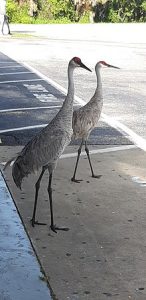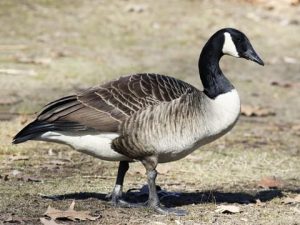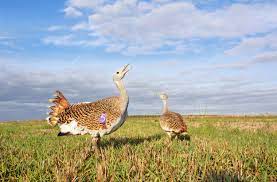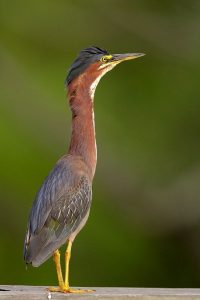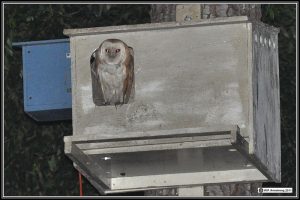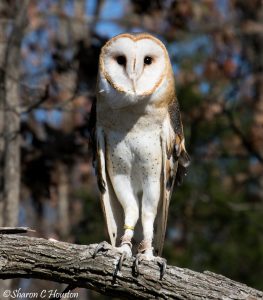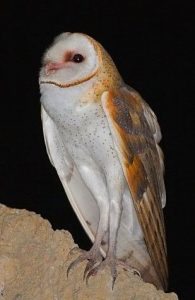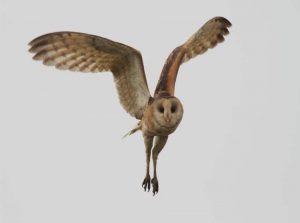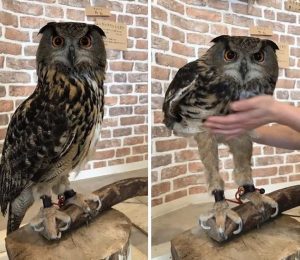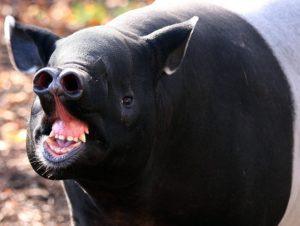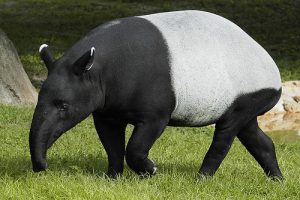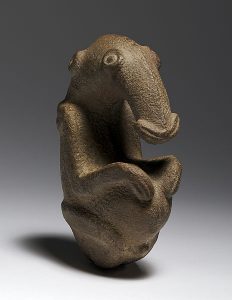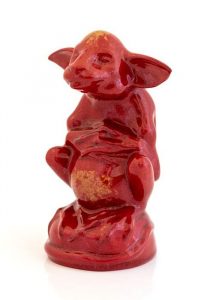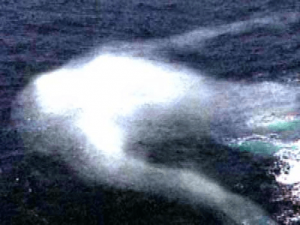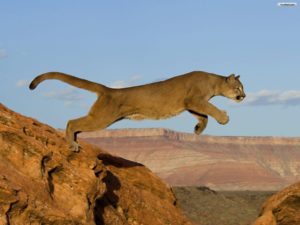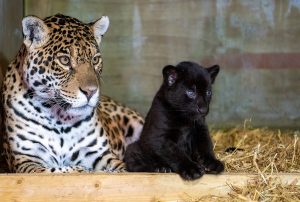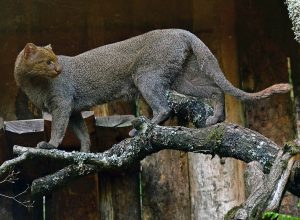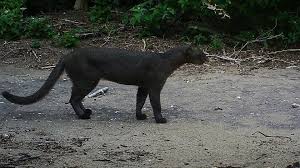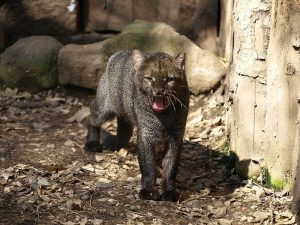Podcast: Play in new window | Download (Duration: 17:23 — 19.8MB)
Sign up for our mailing list! We also have t-shirts and mugs with our logo!
Happy Halloween! Let’s learn about some shapeshifters of folklore, including the werewolf and kitsune (thanks to Joel, Pranav, and Emma!), and a real-life shapeshifter.
Don’t forget the Kickstarter, as if I’d let you forget it: https://www.kickstarter.com/projects/kateshaw/beyond-bigfoot-and-nessie
Further reading:
Further listening:
MonsterTalk (note: sometimes there’s adult language or really scary themes)
Sandman Stories Presents podcast
A death’s head hawkmoth, looking spooky:
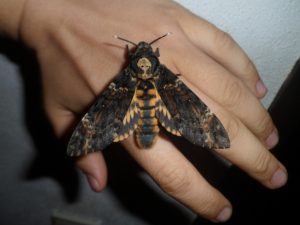
A death’s head hawkmoth caterpillar, not looking spooky at all:
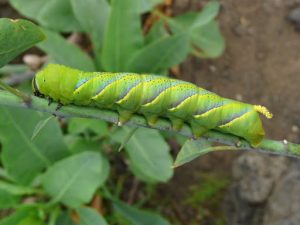
Show transcript:
Welcome to Strange Animals Podcast. I’m your host, Kate Shaw.
It’s Halloween week and that means we need to talk about a truly spooky monster! Both Joel and Pranav suggested the werewolf a while back and Emily suggested the kitsune [kee-tsoo-neh], so let’s learn about shapeshifters and were-animals of all kinds. “Wer” is an Old English word that just means “man,” and just to get confusing, the word “man” used to refer to any person. The word “wif” referred to a woman, with wifman actually meaning woman. From those words we get the modern uses of wife, woman, and man, while “wer” is obsolete except in werewolf.
Let me derail myself from talking about language by reminding you about our Kickstarter! It ends pretty soon, on November 5, 2021, so if you’ve been thinking about backing the project this would be a great time. It’s to help me publish a book all about mystery animals, called Beyond Bigfoot and Nessie: Lesser-Known Mystery Animals from Around the World. The book has a foreword by Blake Smith of MonsterTalk, the science show about monsters, and if you don’t already listen to that podcast, it’s a whole lot of fun and informative too. Thanks to everyone who has already backed the project!
Now, Happy Halloween and on to the spookiness!
The important first question we need to answer is if werewolves really exist.
No. They do not exist outside of folklore and fiction, and I’ll explain why later so you don’t ever have to worry about werewolves or any other shapeshifters. But first, let’s learn what werewolves and kitsunes are.
Werewolves are supposed to be people who can turn into wolves. Depending on the story, this can happen when the person wants to turn into a wolf or it can happen during the full moon whether the person wants to be a wolf or not. Sometimes the person has a magical wolfskin or some other item that they put on in order to transform. Sometimes they have to cast a magic spell, but sometimes it’s a curse that someone else has inflicted on them. Some stories say that the only way to kill a werewolf is by shooting it through the heart with a silver bullet, especially one that’s been blessed by a priest.
The werewolf is mainly from European folklore, where for many centuries all werewolves were also supposed to be witches. Until about the 18th century in some areas, if someone accused you of being a werewolf, you could be put on trial as a witch. Lots of people were convicted of witchcraft and killed during waves of witch-hunts in various parts of Europe. Most of the people accused were women, especially elderly women, especially women who were widowed or single, especially women who owned land that someone else wanted. Hmm.
The kitsune is a creature of Asian folklore, especially from Japan, that’s basically a fox that can work magic. It’s sometimes said that all foxes can turn into humans if they want, especially older foxes. The older and more powerful a kitsune is, the more tails it’s supposed to have, up to nine. Kitsunes sometimes play tricks on people but they can also act as guardians and friends.
About the same time that old ladies were being accused of being werewolves in Europe, though, around the 15th to the 18th centuries, something similar happened in Japan. People were much more superstitious during this time and thought the kitsune was a dangerous goblin-like creature that could possess people and make them act like animals. These days the kitsune is back to being considered mostly a friendly trickster.
Werewolves weren’t the only shapeshifters in the folklore of Europe, although they were the most common. A German story collected in 1879 is about someone who could transform into a fox using an item called a strap.
“In the village of Dodow near Wittenburg there lived an old woman who possessed a fox strap. With its help she could transform herself into a fox, and thus her table never lacked for geese, ducks, and all kinds of poultry.
“Her grandchild knew about it, and one day when the schoolmaster was talking about magic in the school, the child told about the fox strap, and the next day brought it to school.
“The schoolmaster took it into his hand and unintentionally approached his head with it. Suddenly he was standing before the children, transformed into a fox. They broke out with a deafening noise. This so frightened the little schoolmaster that he jumped out the window with a single leap.
“He ran to the hill that lay near the village and there built himself a den.
“One day a great hunt was organized, and our fox was among those pursued by the huntsmen. A bullet hit him, and suddenly a schoolmaster was lying there before the bewildered huntsman. The bullet had struck the fox strap and ripped it apart.”
Witches were also supposed to be able to transform themselves into hares, cats, dogs, even geese in European folklore. In other parts of the world, though, folklore is full of people who can turn into different animals, and the animals are always ones local to the area. In various parts of Africa there are stories of people who transform into hyenas, leopards, and lions, while in various coastal areas of the world there are stories of seals, orcas, dolphins, and other water animals that can transform into people or which are humans in disguise.
The nagual is a story from many places in Mesoamerica, dating back to the ancient Aztecs and Olmecs and other people who lived in what is now Mexico and parts of Central and South America. The nagual was supposed to be someone who could shapeshift into a jaguar. Some people today still believe in the nagual the same way some people still believe in werewolves, and like many other shapeshifters it’s often connected with witches. Modern nagual stories are about witches who can transform into various animals at night, including owls, bats, turkeys, pumas, and even wolves. In some stories they’re thieves and murderers, while in other stories they help people.
Of course, not all folktales about shapeshifters are spooky. Sometimes they’re just meant to be funny, like this story from India.
Once there was a boy who herded buffaloes, and he noticed that at noon every day a dog would visit some nearby pools of water in a little valley. One day he hid to watch the dog. To his surprise, when the dog reached the water, it took its skin off and out stepped a beautiful young woman! She bathed in the pool, then put her dog-skin back on and left. The boy followed her to see what house she went to, then went back to watching his buffaloes.
Later that year the boy’s parents decided it was time for him to marry and began to look for a wife for him. But he told them he wanted a dog as his wife and even had a particular dog picked out. Everyone laughed at him, but he was determined to marry the dog and so his parents agreed.
The wedding took place and that night the new bridegroom pretended to fall asleep, and when the dog got up he watched to see what she would do. She took her dog-skin off and started to leave the house, but the groom jumped up and threw the dog-skin on the fire, where it burned up. His wife remained in her human form and they lived happily ever after.
Here’s another story, this one from Korea and published in 1911. Once a very poor old couple lived on the edge of a town, where they grew just enough rice to keep from starving. The old man caught fish to sell for extra money, but one day when he went to the lake, it was almost dried up and all the fish were gone. In the middle of the lake was a giant frog.
The old man shouted at the frog, “How dare you drink up the lake and eat up all the fish!” But the frog said, “You’ll thank me for it one day. Take me home and let me live in your house, and you’ll see how lucky you’ll be.”
The old man didn’t know what to do. Without the water from the lake, his rice would die, and without the fish from the lake, he had nothing to sell. He took the giant frog home.
The old man and his wife gave the frog the best room in their small house and the best food they had. In return, the frog turned out to be a very pleasant lodger and would talk and laugh with the couple long into the night, telling stories and singing songs.
After a week, the frog said he needed to take a wife, but she had to be beautiful and of noble birth. The old man went to the town’s magistrate, whose youngest daughter was the most beautiful woman in the land, and explained that a giant frog would like to marry the magistrate’s daughter.
The magistrate laughed at first, but when he realized the old man was serious, he ordered him to be beaten. But immediately, hail began to fall from the sky—first tiny hailstones, then bigger and bigger ones. The magistrate hastily changed his mind and said his daughter could marry the frog, and the hail stopped.
In this time and place, a bride went to her wedding with her eyes closed and painted over with wax so she couldn’t see her husband until after the ceremony. Imagine the bride’s horror, after the wax was removed and she took her first look at her new husband, when she discovered he was a giant frog! The bride was furious, but the frog said, “You’ll be glad you married me. Will you take these scissors and loosen the skin of my back? It’s too tight and hurts me.”
The bride was so angry that she took the scissors and cut the frog’s skin open all the way down his back. Then, to her astonishment, he wriggled right out of his skin and out stepped a handsome prince wearing fine silk clothes. He had been enchanted and the spell could only be broken when he married a human woman. He and his wife lived happily ever after, and the poor old couple who had helped him were given all the riches they desired and lived in a palace to the end of their days.
I could keep going forever, because there are a whole lot of stories about shapeshifters from around the world. If you want more folktales, I recommend the podcast “Sandman Stories Presents.” Each episode is another folktale. It’s really interesting and the host’s voice is soothing if you need a podcast to help you fall asleep.
Outside of folklore and mythology, shapeshifters aren’t real. To understand why, we have to look at a very different animal, the butterfly—or, since this is a Halloween episode and most moths are nocturnal, the moth. Let’s learn about an especially Halloween-y moth, the African death’s-head hawkmoth. It gets its name from a pattern on its back that looks sort of like a human skull. Its upper wings are black and its lower wings are usually yellowy-orange. Its wingspan is as much as 5 inches across, or 13 cm. It lives in parts of Africa and migrates to Europe for the summer.
The deaths-head hawkmoth caterpillar can grow up to 6 inches long, or 15 cm, and has a curved horn-like structure basically on its butt. After it hatches, it spends the next month or two eating leaves, especially the leaves of potato and tomato plants. During this time it will go through five stages of development, called instars, where it sheds its skin and grows larger. Finally, the caterpillar burrows into the ground and forms a little nesting chamber in the dirt. For the next few weeks it just sits in the chamber while moisture evaporates from its body and it forms a hard shell-like structure called a pupa.
Inside the pupa, the caterpillar transforms into a moth by breaking down its own body with digestive juices. The resulting goo of undifferentiated cells reforms into a moth body, a process that takes weeks. Finally the newly formed moth emerges from the shell of its pupa and from the ground, climbs onto a leaf or twig, and hangs there for a little while as its wings uncrumple and extend to their full size.
The transformation of a moth or butterfly, or other insects that go through the same process, is astounding and not fully understood. What we do know is that it takes massive amounts of energy. A caterpillar eats all the time in order to store up energy to metamorphose into a moth or butterfly. If there was an easier way, for instance if a caterpillar just had to cast a magic spell or put on a mothskin coat to transform, they would do it the easy way. But they don’t, because this is the most efficient way to transform from one body to another that nature has developed. It takes weeks, it’s messy and dangerous because the animal is helpless the whole time, and it only happens once in an insect’s lifetime.
So that’s that. Werewolf movies are a lot of fun to watch, especially this time of year, but you don’t have to lie awake at night afterwards worried that a werewolf is going to bite you.
You can find Strange Animals Podcast at strangeanimalspodcast.blubrry.net. That’s blueberry without any E’s. If you have questions, comments, or suggestions for future episodes, email us at strangeanimalspodcast@gmail.com. If you like the podcast and want to help us out, leave us a rating and review on Apple Podcasts or Podchaser, or just tell a friend. We also have a Patreon at patreon.com/strangeanimalspodcast if you’d like to support us for as little as one dollar a month and get monthly bonus episodes. There are links in the show notes to join our mailing list and to our merch store.
Thanks for listening!
